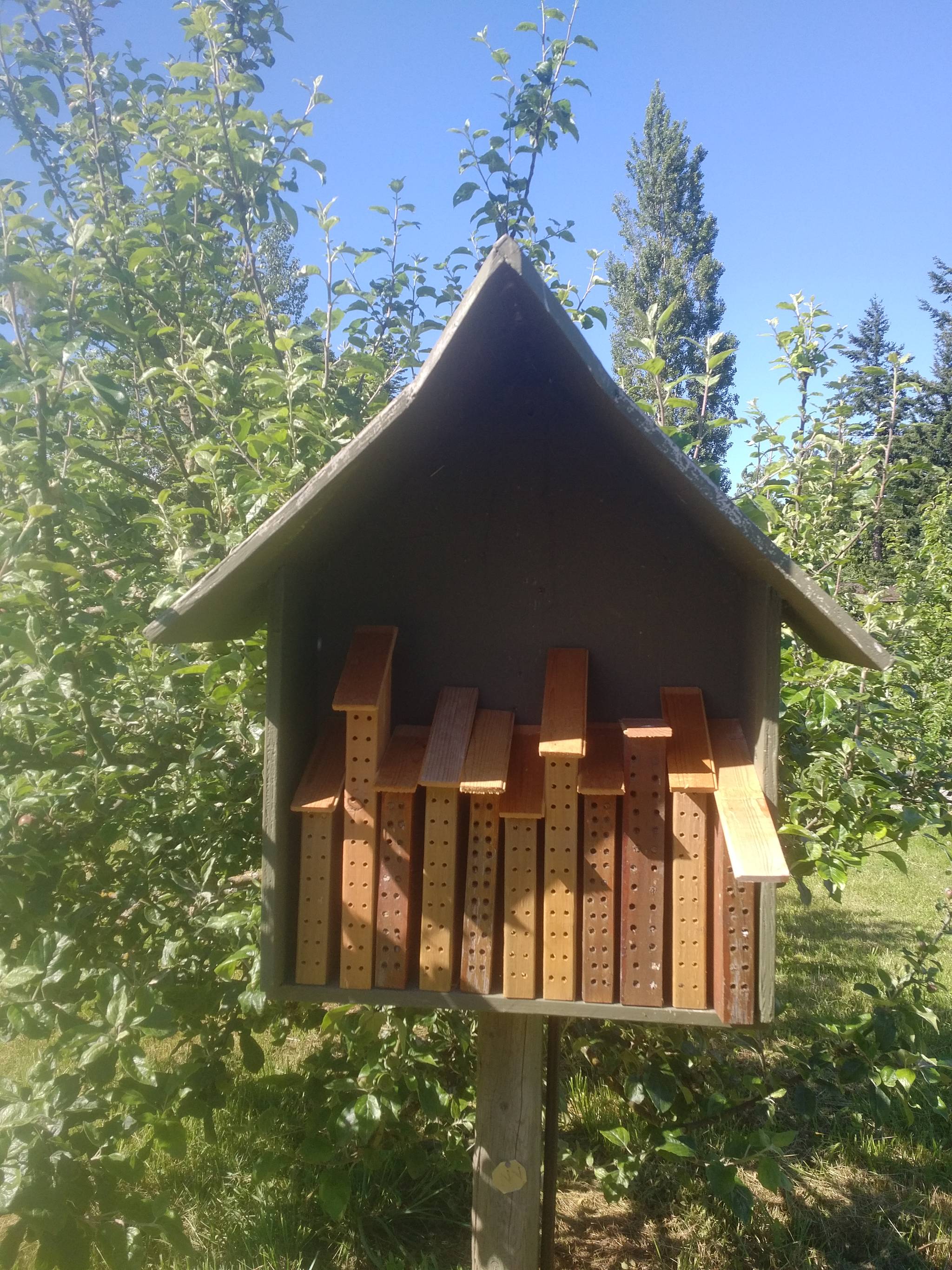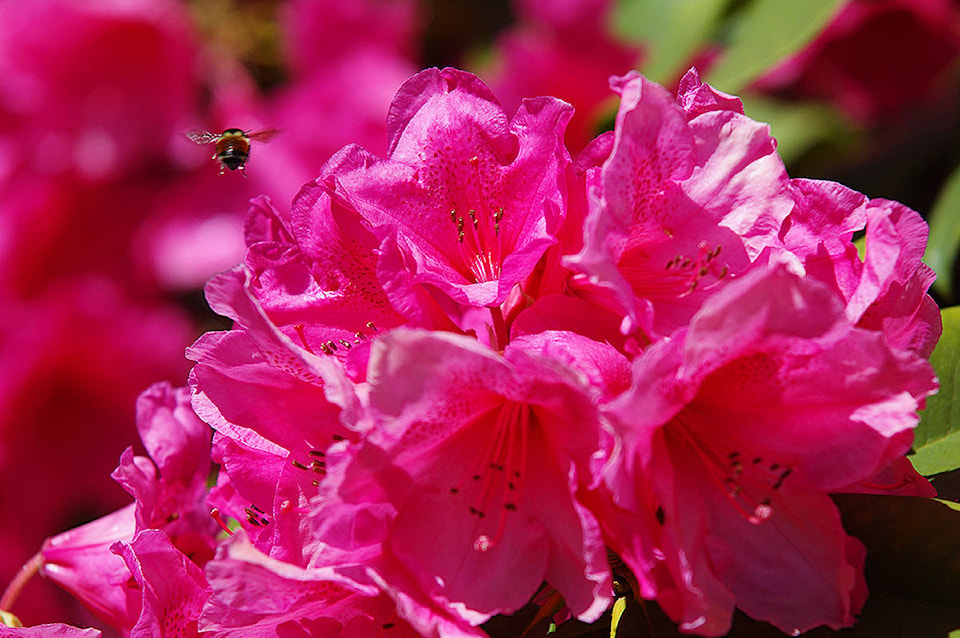One third of the food we eat and 90 per cent of flowering plants, including fruits and berries, rely on pollination by insects.
But according to Lora Morandin, the Western Canada program manager for Pollinator Partnership Canada, there are some very real problems associated with the decline of bee populations upon which that food production relies; and the problems may not be what most people assume them to be.
“There are really two separate but related issues. Certainly honeybees are one of the major pollinators and a whole industry has grown up around moving bees from one crop to another to pollinate those crops, but it’s getting harder to keep those bees healthy or even alive,” said Morandin.
“But the second issue involves native bees (honey bees were imported from Europe and are not native to North America). We have 850 species of native bees who are vital for the health of our crops, wildflowers and other plants, and they are in serious decline. Some are close to extinction.”
Morandin is heading up a new group called the Island Pollinator Initiative to help create an understanding of the problems and risks associated with the danger to bee populations through education, collaboration with stakeholders, (like farms and cideries) research and fundraising.
Mark Winston, a professor at Simon Fraser University and the author of Bee Time, is supportive of greater public education.
“There’s been a lot of media attention, some of it very inaccurate, regarding colony collapse disorder (CCD) and people are concerned,” but I suppose that’s a good start,” said Windsor.
In fact, a poll released on June 27 by Friends of the Earth reported that 75 per cent of British Columbians were concerned or very concerned about threats to the bee population. But the same survey showed that Canadians appear to be uninformed about the nature of the threats to bees or what needs to be done. Seven of ten people weren’t sure of the role of native bees in pollination.
Morandin described the situation as a nuanced issue with no single threat or solution but proposes a number of simple solutions that would begin to have important impacts on the situation.
“We can reduce pesticide use, plant flowers and maintain natural habitat free of invasive species like scotch broom for the bees. And we can start relying more heavily on native bee populations as opposed to the honey bees we now use almost exclusively,” she said.
It’s all advice that Kristen Needham, the owner and founder of Sea Cider Farm and Ciderhouse in Central Saanich has taken to heart.
“Bees are fundamental to our business. Without them there are no apples and we can’t make cider,” said Needham, whose operation has, in the past, relied on rented hives of honey bees for pollination of their trees.
“We’ve made some fundamental changes we’re about, relying more and more on the native Mason bees. We’ve constructed habitats for them on the property andwe’re working hard to grow that native population” said Needham, adding that the Mason bees are both better pollinators and have the added benefit of not stinging.
To aid in bolstering the Mason bee population, Sea Cider has also set aside about 40 per cent of its land for natural habitat; removing invasive species of plants and allowing the second growth forest and meadows of wildflowers to prosper, along with presumably grateful swarms of bees.

